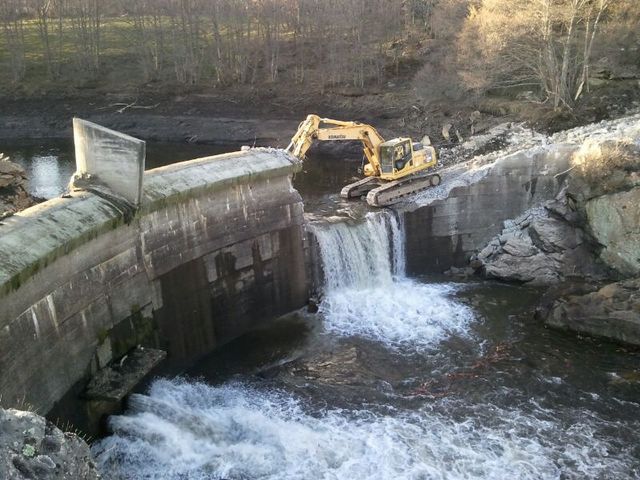
Image Source: Google
Dams have long been essential structures for human societies, providing water supply, flood control, and hydropower. However, the construction of dams can have detrimental effects on the environment, disrupting ecosystems and causing harm to wildlife. In recent years, there has been a growing recognition of the need to restore rivers and streams by removing or modifying dams. Dam remediation projects are now underway across the globe, aiming to undo the damage caused by these structures and rejuvenate natural habitats.
The Impact of Dams on Ecosystems
Before delving into how dam remediation is restoring ecosystems, it's crucial to understand the negative impacts that dams can have on the environment:
Disruption of Fish Migration
- Dams can block the natural migration patterns of fish, such as salmon, leading to a decline in fish populations.
- Loss of access to spawning grounds can further threaten the survival of fish species.
Altered Flow Regimes
- Dams can disrupt the natural flow of rivers, leading to changes in water temperature and oxygen levels. Refer Link: https://damsafetygroup.com/.
- These alterations can harm aquatic organisms and vegetation that depend on specific flow regimes.
Sediment Accumulation
- Dams trap sediment, leading to downstream erosion and reduced sediment supply to downstream habitats.
- This can impact river channel morphology and harm habitats that rely on sediment deposition.
The Process of Dam Remediation
Dam remediation involves the removal or modification of dams to restore natural river processes and ecosystems. The process typically includes the following steps:
Assessment and Planning
- Experts assess the ecological impact of the dam and develop a remediation plan based on scientific data.
- Stakeholder engagement is crucial to ensure that the remediation project addresses the needs of the local community.
Dam Removal or Modification
- Dams can be completely removed to restore the river to its natural state.
- In cases where full removal is not feasible, dams may be modified to improve fish passage and restore flow regimes.
Monitoring and Adaptive Management
- Monitoring the ecosystem post-remediation is essential to assess the effectiveness of the project.
- Adaptive management strategies are employed to address any unforeseen issues and ensure the long-term success of the restoration effort.
Success Stories in Dam Remediation
Several dam remediation projects have demonstrated the positive impact of restoring rivers and ecosystems. Here are some notable success stories:
Elwha River Restoration, USA
- The removal of two dams on the Elwha River in Washington State led to the recovery of salmon populations.
- Native vegetation rebounded, and the overall health of the river ecosystem improved significantly.
Veazie Dam Removal, USA
- The removal of the Veazie Dam on the Penobscot River in Maine restored access to over 1,000 miles of habitat for migratory fish.
- Atlantic salmon and other fish species have returned to the river in higher numbers since the dam removal.
Matilija Dam Removal, USA
- The removal of the Matilija Dam in California allowed for the recovery of the endangered Southern steelhead trout.
- The restoration of natural sediment flow benefited native vegetation and improved habitat conditions for wildlife.
The Future of Dam Remediation
As awareness of the environmental impacts of dams continues to grow, the future of dam remediation looks promising. Here are some key trends shaping the future of restoring ecosystems through dam remediation:
Collaborative Efforts
- Partnerships between government agencies, conservation organizations, and local communities are essential for successful dam remediation projects.
- Collaborative efforts can help address complex environmental challenges and ensure the long-term sustainability of restored habitats.
Technological Innovations
- Advancements in dam removal techniques and monitoring technologies are making remediation projects more efficient and effective.
- Remote sensing tools and environmental DNA analysis are aiding in the assessment and monitoring of ecosystem recovery post-dam removal.
Policy and Funding Support
- Government support through policies and funding initiatives is crucial for scaling up dam remediation efforts worldwide.
- Incentivizing dam removal and restoration projects can help accelerate the recovery of degraded river ecosystems.
In conclusion, dam remediation is playing a vital role in restoring ecosystems and reviving river habitats around the world. By undoing the environmental harm caused by dams, these initiatives are helping to turn the tide and create a more sustainable future for both wildlife and local communities.